- INTRODUCTION
The HEARTS project is a aGrundtvig Partnership Project under the Lifelong
Learning Programme financed by European Commission.
The main subject is to promote the cultural diversity revaluing the heritage
from partner, focused at affectivity and solidarity traditions, to empower persons
and communities identity and enhance their social inclusion and development.
Main problems are seniors isolation, demotivation and low recognition as
society enriching citizens, lack of learning opportunities supporting more active and
creative live, namely to overcome the digital impairment and improve European
belonging relationship; the same time
deep their own cultural identity and reinforce as well the European diversity
belonging, improving traditions sapience skills, strengthening
inclusion pathways.
Our Project aim: - Tackling the exclusion and loneliness problem among older people;
- Encouraging them to participate actively in their communities and engage
them in active citizenship by giving back their sapience potential; - Creating full opportunities for them to transmit the identity values and
human sapience to new generations; - Reinforcing individuals, groups and creating common European identity values.
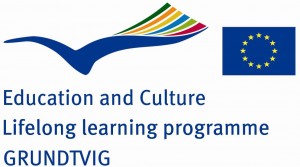 HEARTS project is supported by a network of four
HEARTS project is supported by a network of four
Turkey, Italy and Greece. The following organizations repr
Bucovina guides, Bolu Halkın Eğitimini Geliştirme ve Destekleme Derneği, AIM
Network, and Computer House.
linguistic, cultural, social and religious diversity. This diversity was no
for cooperation but the confirmation that diversity is an added value.
Bucovina Guides – The association was established in 2010
the aim of the organization was to
and share this passion with as many people as possible. BGA organizes
types of activities from short trips to local
for the elderly, to more extreme activities for adventure seek
another purpose that our organization has is to help
develop in healthy and constructive ways. We want to encourage them to be
responsible, to protect and love the natural environment
find a passion that can help them
The NGO’s site is www.bucovinaguides.ro
Bolu Halkın Eğitimini Geliştirme ve Destekleme Derneği
established mainly for supporting public education and the learners. We provide
financial and organizational assistance to Izzet Baysal Public Education Center. We
also organize seminars and fairs to introduce the benefits of public education to
the society. We provide guidance
for their specific needs. Our foundation also work in rural areas by organizing small
scale fairs and exhibitions to integrate villagers to the city society. We support
teaching traditional handcrafts to sa
traditional handcrafts and arts we have good communication with seniors and youth.
In some ways our foundation provides an informal medium for intergenerational
learning and interaction.
The NGO’s site is http://www.boluhegd.org.
is supported by a network of four countries: Romania,
Turkey, Italy and Greece. The following organizations represent the four countries:
Bucovina guides, Bolu Halkın Eğitimini Geliştirme ve Destekleme Derneği, AIM
Despite of they are neighbor countries they show
linguistic, cultural, social and religious diversity. This diversity was not an obstacle
for cooperation but the confirmation that diversity is an added value.
The association was established in 2010. Even from the beginning,
the aim of the organization was to offer professional services in outdoor activities
this passion with as many people as possible. BGA organizes different
types of activities from short trips to local historical monuments and monasteries
more extreme activities for adventure seekers. Moreover,
another purpose that our organization has is to help children from orphanages to
constructive ways. We want to encourage them to be
responsible, to protect and love the natural environment and we try to help them
escape from their everyday life.
www.bucovinaguides.ro.
Bolu Halkın Eğitimini Geliştirme ve Destekleme Derneği The foundation was
supporting public education and the learners. We provide
financial and organizational assistance to Izzet Baysal Public Education Center. We
also organize seminars and fairs to introduce the benefits of public education to
the society. We provide guidance to the learners for selecting appropriate courses
for their specific needs. Our foundation also work in rural areas by organizing small
scale fairs and exhibitions to integrate villagers to the city society. We support
teaching traditional handcrafts to save them being forgotten. By working on
traditional handcrafts and arts we have good communication with seniors and youth.
In some ways our foundation provides an informal medium for interaction.
The NGO’s site is http://www.boluhegd.org.
AIM Network is an Intercultural Italian organization, based in Ferrara. Although, it
is a local, small size organization, it has an international view, thanks its
participation in various European projects and the different
and origin of its members. The board members come from different expertise and
this peculiarity gives to the association a wide range of action. They mainly deal
with Intercultural mediation and integration of the immigrant pupils in t
as well as social integration of sensitive members of the society.
The site is http://www.aimnetwork.eu/
Computer House – Our center is an educational center with two functions. First is a
computer learning center with adult classes and second, a center offering free
courses for unemployed people at risk but older people who want to enrich their
knowledge in computer learning. In offering learning of basic skills. It works as a volunteer in personal coaching, guidance to re-education, job openings, placements and job seeking to a variety of
marginalized groups. In the center are Working towards the vocational rehabilitation of learners and promote the
europass.
HEARTS RESEARCH
About the values, lifestyles and communication of elderly and young people
SOCIOCULTURAL BACKGROUND
Which objectives and topics in this project? All together, we built a
dedicated questionnaire, in order to observe our socio
competences, needs and hopes, quality of life and opinions about intergenerational
communication.
We collected a total of 400 questionnaires: 200 in Aged people(
and 200 in Young people (≤ 30 years), in the four countries of the project; above you
can see the main results of our survey.
Experiences to share
Aged people would share ethical general values (as integrity, honesty, dignity,
philosophy, respect), their life’s exp
the future.
Young people would share their personal experiences in art, music, sport and
travelling; they would talk together; they would to teach the benefits of technology
and to teach reading and writing to illiterate old people.
Competences
Aged people can do very well: handmade things, cooking, crafts/fix things/do
it-yourself, their own work, drawing, making friends. Young people can do
PC/ICT skills, sports, playing musical instruments, listen/encourage/build relations,
cooking.
In both groups, the majority of people would like to teach and share their skills with
others.
Desire of learning
Aged people would like to learn foreign languages, to play a musical
instrument, to better use computers, to painting, to improve their medical
knowledge. Young people would like to know many languages, to play musical
instrument, to improve their ICT know
cooking and driving. They all show the same desires, without differences due to age
or nationality.
Hobbies
Both aged and young people claim to have as hobbies: music, travelling,
reading, photography, arts; young people in all countries like to practice sports and
to play music.
Voluntary activities
A large number of people, both aged and young, carry out voluntary social,
cultural, ecological and health related activities.
Values
The main value indicated is respect, both in aged and young people, followed
by honesty, family, friendship, loyalty, solidarity/helping each other, common sense,
sincerity, freedom, respecting religious holidays, work, being against discriminations
Intergenerational communication
Easy or difficult, or non-existing?Rare,occasional,frequent? Τhe answers have
a great variability, showing a broad spectrum of opinions, probably reflecting
the difficulty to define “communication” and the differences of its contexts.
Among the factors hindering the intergenerational communication
people identify: different age, experiences, education, values, concepts; lack of
sharing, listening, respect; television and technology.
Young people highlight: difference of age, experience, values and priorities ,
customs; lack of communication and common activities; social networks, modernism
and globalization.
Factors and activities facilitating the intergenerational communication?To organize or
share activities together, to travel/work together,to find common interests; respect,tolerance, patience, avoiding criticism; and …to communicate of course.
Learning and improving skills
About one half of elderly are interested in computing and technological skills,
with a relevant percentage of ICT-competent;youth are more interested(average
78%) in learning or improving ICT. Aged people show relevant interest (64%) in
learning craft or traditional skills and young people to declare a great – unexpected –
interenst in it (76%)
Elderly and youth, in our sample, think to be very different but, hey are very
similar! They share indeed ethical general values, liking, dreams, needs for learning,
opinions about communication.
The list of values results very interesting and reflects, in all groups, the
presence of deep- non superficial values and of a high level of social cohesion:
respect, solidarity, honesty, loyalty, helping, common sense are the most
represented values. In their dreams: health for all, a peaceful life, a better world,
work, family and self-realization. If they had a magic wand, almost all cases of our
sample would change the world:
politics,economy,to eliminate wars,injustice,indifference.
Our sample represents, with very little difference among groups and
countries, a society full of ideals, centered on social well-being,open to “the others”:
this is strongly encouraging for our project.
GOOD PRACTICES IN ARTS AND CRAFTS
ROMANIA
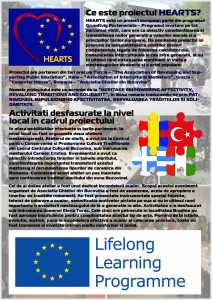 1. The organizer: The townhall of the village
1. The organizer: The townhall of the village
Blajeni, Hunedoara county
The name of project: The Involving of young
people in capitalization and recovery of local traditional values
“The saving and protecting the tangible and intangible cultural heritage for future generations can take place only through a consistent joint with economic, social and cultural development of the present generation.”
The identification and the use of key persons among rural communities and putting them face to face to the new generation to realize the natural transmission of “to know-how” is the easiest way, in terms of finance and methodological for keeping traditions.
In this way it is mediated a contact betweevn the key persons and the persons which are
receiving knowledge, after completing the educational intervention they will remain and
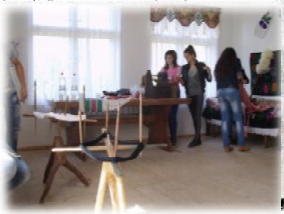 will coexist in the same space, united by a bond created by the project. Also among the younger
will coexist in the same space, united by a bond created by the project. Also among the younger
generation (especially young people from rural areas) shows a low level of understanding and
appreciation of authentic traditional values in the context of new technology penetration and low
degree of trust in their community values.
The workshops of processing wood and textile fibers revealed the old techniques work,
used for centuries in harnessing local resources.
The tool used was the authentic one: the horse for making “șița”, the axe, distaff, etc. There
have been revealed the work steps, the working materials preparations and the practical
applications have been made as well. As in other ethnographic areas of the country, the women
from “Moți Country” were skilled to work their clothes with which one they was proud in the village or in the fairs in which they participate throughout the year. Fortunately, some of the tissue secrets or
embroidery, etc. have not lost, there and are still some people which can transmit
the knowledges, even is increasingly difficult.
“Șița” was one of the favorite of the locals for rooftops and annexes. This method
local resources can be successfully used also today, being a cheaper option, with a very pleasant look and
with a totally clean process technology. The fact that students of this area learn to make
shingle helps to save a valuable skill, but it also offers them the possibilities to practice
their technical skills and, why not, they could orient to practice a traditional craft.
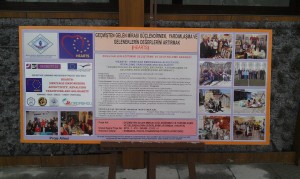 2. The organizer: International Museum of the decorated eggs – Vama
2. The organizer: International Museum of the decorated eggs – Vama
The name of project: Workshop for decorating eggs
The egg museum is an important tourist destination to find out
everything about tradition in Bukovina, about the skillful art of decorating the Easter eggs, now well-known all over the world.
In the old technique of dying the egg they used a “bath” of colour, the motif being traced with natural bees – wax with the help of the “kishitza “ – a stick ended in a piece of metal within which there is
a hair taken from a horse tail or a hair from a pig meant to limit the flow of wax.
This technique called “batik” is still used today but in early 1900s there appeared a new technique- the decoration of the egg with wax in relief. The Slavs claim the batik technique to be theirs
(including their famous “pisanka”), but the technique of the wax in relief is unique in the
world.
“All these activities dedicated to the egg stand for my love for tradition and customs.”
Traditions, beliefs, superstitions about Easter eggs or about the egg as the symbol of the creation of the universe have existed all around the world, but people know less and less about that.
Throughout the year here are organised workshops for teenagers and also for adults persons.
The “teachers” for these workshop are old people from Vama which are knowing this tradition from when they
were young. At the practical activities the staff from museum executed each operation with the
explanation accompanying it.
Then, after they giving to each one eager an egg and tools, they passed to the
every “student” and examine how working and they intervene if necessary, to encourage and
remind some basic operations or symbols necessary.
After making you familiar with the symbols and the techniques of decoration you can work upon an egg all by yourself and why not discover an unknown dormant artist in the depth of your soul!
The objectives of these workshops is to transmit and to keep alive this very important tradition from Bukovina and also they want to create more common activities for young and senior people.
3. The organizer: Bucovina Guides Associatian The name of project: Ceramic art for teenagers
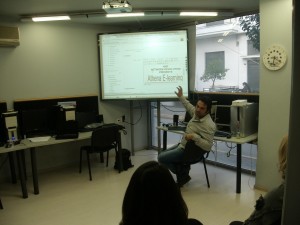 The clay crafting workshop, brought together Nine students aging between 15 and 19 from “Mihai Bacescu”
The clay crafting workshop, brought together Nine students aging between 15 and 19 from “Mihai Bacescu”
Technical college had the opportunity to learn how to create clay objects. The training, which was really popular at some point in the past, was thought by the popular artisan Carmen Cristea and it lasted for about two hours. The activity was initiated by Bucovina Guides Association especially for the
HEARTS European Project, supported by
GrundtvigPogramme.
